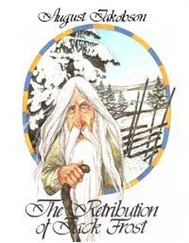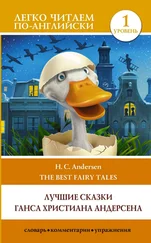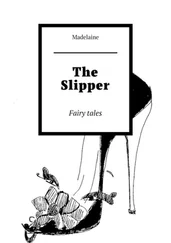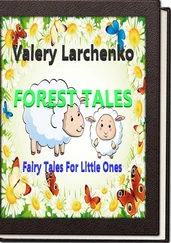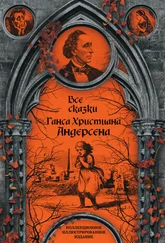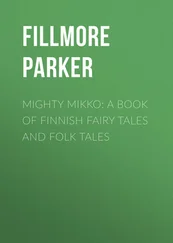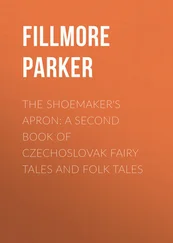Ганс Андерсен - Fairy Tales
Здесь есть возможность читать онлайн «Ганс Андерсен - Fairy Tales» весь текст электронной книги совершенно бесплатно (целиком полную версию без сокращений). В некоторых случаях можно слушать аудио, скачать через торрент в формате fb2 и присутствует краткое содержание. Жанр: Старинная литература, на английском языке. Описание произведения, (предисловие) а так же отзывы посетителей доступны на портале библиотеки ЛибКат.
- Название:Fairy Tales
- Автор:
- Жанр:
- Год:неизвестен
- ISBN:нет данных
- Рейтинг книги:4 / 5. Голосов: 1
-
Избранное:Добавить в избранное
- Отзывы:
-
Ваша оценка:
- 80
- 1
- 2
- 3
- 4
- 5
Fairy Tales: краткое содержание, описание и аннотация
Предлагаем к чтению аннотацию, описание, краткое содержание или предисловие (зависит от того, что написал сам автор книги «Fairy Tales»). Если вы не нашли необходимую информацию о книге — напишите в комментариях, мы постараемся отыскать её.
Fairy Tales — читать онлайн бесплатно полную книгу (весь текст) целиком
Ниже представлен текст книги, разбитый по страницам. Система сохранения места последней прочитанной страницы, позволяет с удобством читать онлайн бесплатно книгу «Fairy Tales», без необходимости каждый раз заново искать на чём Вы остановились. Поставьте закладку, и сможете в любой момент перейти на страницу, на которой закончили чтение.
Интервал:
Закладка:
Andersen was a great admirer of E. T. A. Hoffmann and was familiar with his “Nussknacker und Mausekönig” (The Nutcracker and the Mouse King,” 1816). Though there is no direct parallel with Hoffmann’s tale, it is apparent that Hoffman’s transformation of the toys and the battle to win the affection of a young girl played a role in Andersen’s writing of ”The Steadfast Tin Soldier” and other tales that feature talking inanimate objects. Hoffmann was among the first writers of fairy tales to set a story in the nursery room of a middle-class home, and Andersen followed him in doing this. Once he became famous he would tell tales in the nursery rooms of his friends.
THE SHEPHERDESS AND THE CHIMNEY SWEEP (HYRDINDEN OG SKORSTEENSFEIEREN, 1845)
As with “The Steadfast Tin Soldier,” this tale shows the influence of E. T. A. Hoffmann’s work, especially “The Nutcracker and the Mouse King” (1816). Andersen’s story served as the basis for one of the most brilliant animated films in the twentieth century, Paul Grimault’s La Bergère et le ramoneur (The Curious Adventures of Mr. Wonderbird, 1959), which was revised and reproduced in 1979 as Le Roi et l’oiseau (The King and the Bird).
THE DARNING NEEDLE (STOPPENAALEN, 1845)
Andersen was probably inspired by the Danish sculptor Bertel Thorvaldsen to write this tale, which was first published in the magazine Gaea.
THE OLD HOUSE (DET GAMLE HUUS, 1847)
Andersen based this tale on his memories of visits to homes of his friends in Germany and Denmark. He was given a tin soldier by the son of German poet Julius Mosen in 1847. The two-year-old daughter of Danish composer Johan Hartmann, who danced to the singing of her brothers and sisters, served as the model for the laughing child.
THE RAGS (LASERNE, 1869)
Andersen wrote this tale, composed some eight or ten years before its publication in Folkekalender, as a satire on young Norwegian writers who were criticizing better-established Danish writers. It was originally based on his observations at a paper factory, where he saw large piles of rags that were eventually made into paper. As Norwegian writers gained a higher profile, Andersen thought that the satire no longer held true. Nevertheless, the comic situation retained its appeal. Andersen had earlier used the contrast between Norwegians and Danes in “The Hill of the Elves.”
LEGENDS
HOLGER THE DANE (HOLGER DANSKE, 1845)
This tale, based on a piece of Danish folklore about a legendary king who will rise to save Denmark, is similar to the German legend of the twelfth-century German king and Holy Roman Empire Fredrick Barbarossa, who is said to be buried in Kyffhauser Mountain and will return one day to bring glory to Germany. Andersen based the old man in this tale on his grandfather and on the father of Danish sculptor Bertel Thorvaldsen, who were both wood carvers. During the nineteenth century there were numerous adaptations of Christian Pedersen’s adaptation of a French medieval romance, Ogier le Danois, which was related to the legend. While Andersen knew the legend from his school days, a new edition of Pedersen’s work was published in 1842. Andersen also would have known Just Mathias Thiele’s poem about Holger the Dane (1830).
BIRD PHOENIX (FUGL PHØNIX, 1850)
This symbolical tale about the rise of poetry was first published in Den Nye Børneven, an illustrated magazine for children. Beginning in the medieval period, in European literature the phoenix was a common figure representing resurrection and immortality. The origin of the myth is considered to be Oriental and Egyptian. The Egyptians believed that the bird lived about 500 years and toward the end of its life built a nest of spice branches and set it on fire, dying in the flames. From the ashes, a new phoenix would arise and fly to the city of the sun.
THE FAMILY OF HEN-GRETHE (HØNSE-GRETHES FAMILIE, 1869)
This tale was first published in English in The Riverside Magazine for Young People. Andersen based the story on a newspaper article about Marie Grubbe, a young aristocrat, who had been married three times, first to the half-brother of Christian V, Ulrich Frederick Gyldenløve, then to a nobleman from Jutland, and later to a seaman. Andersen uses the history of a castle as his frame for telling a fascinating legend about Marie Grubbe; he transforms her into a proud and willful woman, and has the famous Danish writer Ludvig Holberg meet her while he was escaping a plague that had spread to Copenhagen.
EVERYTHING IN ITS PROPER PLACE (ALT PAA SIN RETTE, 1853)
This inventive tale by Andersen demonstrates his ability to create his own “original” legends. Inspired by the poet Just Mathias Thiele, it is a satirical representation of class conflict in Denmark. A common motif in European folklore, the magical flute is generally used to expose lies and hypocrisy.
Inspired by Andersen’s
Fairy Tales

LITERATURE
Hans Christian Andersen is a unique figure in the history of the fairy tale. As a young boy, he was influenced by the wondrous tales of the Brothers Grimm, E. T. A. Hoffmann, and other German Romantic writers, as well as by Danish folklore, and his tales cannot be fully appreciated without understanding his interest in these works. But Andersen went his own way: He was the first European writer to appeal both to children and to adults with stunning and provocative tales. Indeed, he developed an inimitable style and tone that transformed fairy tales into passionate and ironic stories that recorded the bitter struggles of artists and marginalized people to discover a modicum of joy in their lives. Throughout his life Andersen experimented with idiomatic language and popular art forms, endowing the fairy tale with novel motifs and characters that anticipated modernism. Andersen was always on a quest for something new. He traveled widely in Europe and based his tales on his personal experiences and encounters with the leading European artists of his time.
In his extensive travels Andersen made the acquaintance of many eminent writers, including Ludwig Tieck, Friedrich de la Motte Fouqué, the Brothers Grimm, Honoré de Balzac, Alexandre Dumas, Victor Hugo, Henry James, Heinrich Heine, and Charles Dickens (to whom Andersen dedicated A Poet’s Day Dreams, 1853). Andersen was also a close friend of poets Robert and Elizabeth Barrett Browning. Once, when visiting the Brownings in Rome, he read aloud “The Ugly Duckling” as Robert Browning clownishly acted it out for a group of children. Elizabeth Browning dedicated her final poem— “North and South”—to Andersen; in it “North” refers to Andersen’s native Denmark, while the city of Rome, a popular vacation spot, is the “South.” The poem’s final stanza reads: The North sent therefore a man of men
As a grace to the South;
And thus to Rome came Andersen.
—“Alas, but must you take him again?”
Said the South to the North.
Andersen influenced and was influenced by numerous writers during his lifetime, but it was after his death that his works became significant referential points for many European and American writers of fairy tales, short stories, and novels. In England, the fairy tales of Oscar Wilde and Andrew Lang were marked by Andersen. At the beginning of the twentieth century Franz Kafka and Thomas Mann noted that they were influenced by Andersen’s tales when they were young. Indeed, throughout the twentieth century, writers of fairy tales around the world, along with illustrators, demonstrated time and again in their works that the fairy tale as a genre had to reckon with Andersen’s presence.
Читать дальшеИнтервал:
Закладка:
Похожие книги на «Fairy Tales»
Представляем Вашему вниманию похожие книги на «Fairy Tales» списком для выбора. Мы отобрали схожую по названию и смыслу литературу в надежде предоставить читателям больше вариантов отыскать новые, интересные, ещё непрочитанные произведения.
Обсуждение, отзывы о книге «Fairy Tales» и просто собственные мнения читателей. Оставьте ваши комментарии, напишите, что Вы думаете о произведении, его смысле или главных героях. Укажите что конкретно понравилось, а что нет, и почему Вы так считаете.

![Ганс Андерсен - Ганс Чурбан[другой перевод]](/books/95480/gans-andersen-gans-churban-drugoj-perevod-thumb.webp)

